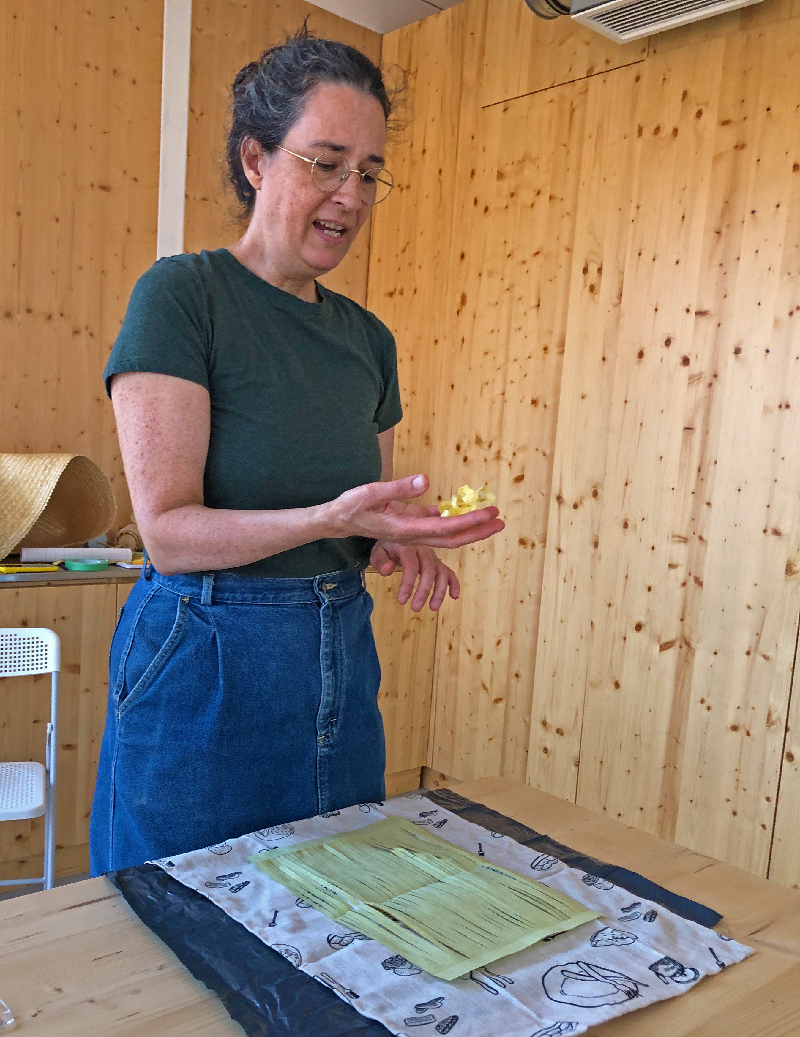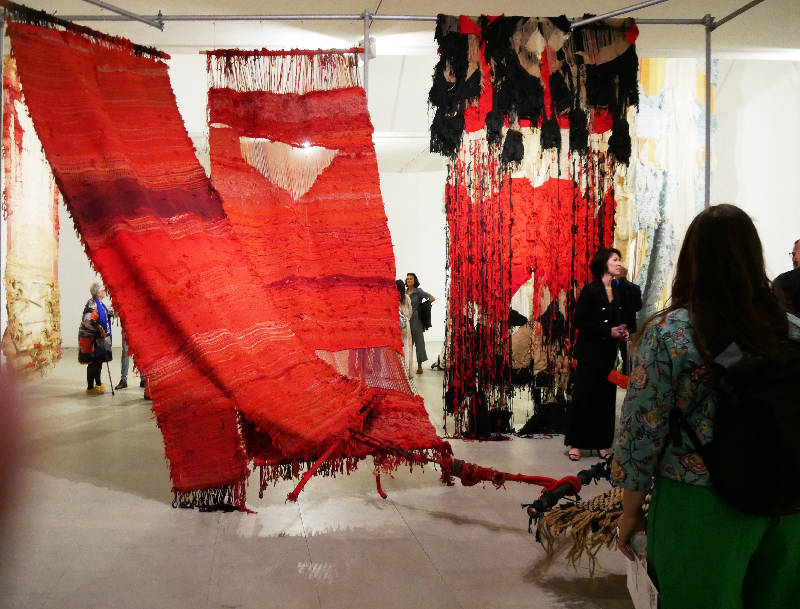
Contextile part 2
On 7 September 2024, there was more than just a very important international textile art exhibition, Contextile 7. There were accompanying events like the textile art exhibition of the guest country Canada, the exhibition of all the educational institutes in Portugal offering textile education and the fantastic exhibition with works of Josep Grau-Garriga that had an eye-opening effect on many of the younger visitors, who saw his work for the first time! The following day was dedicated to lectures by Contextile participants from the different exhibitions and from different countries. Further events were workshops and exhibitions of the results of the artistic residencies later in September.
Canada the invited country: The Biennale International du Lin de Portneuf has been partners with Contextile since 8 years. This year they were invited to curate an exhibition of current contemporary art from Canada. This exhibition is demonstrating the drive of the Canadian creators to transgress artistic boundaries that integrate textile know-how and the conceptual approaches associated with contemporary practices. The choices of the curators emphasized traditional media such as embroidery(used by Anna Torma, Caroline Monnet and Barbara Todd), tapestry( used by Line Dufour), weaving (Meghan Price and Hannah Claus) and Jacquard weaving (Ruth Scheuing). Sculpture was used in the works of Sarah Stevenson and Guillaume Brisson-Darveau, installation was used in a spectacular way by Carole Simard Laflamme and video was to used by Graeme Patterson. My favorites were the stunning installation of an oversized kimono made of paper by Carole Simard Laflamme, that took a whole room to be shown, and the well-known embroidery work of Anna Torma, that I admire since decades. Her embroidery with human figures and wild beasts is showing the fantasy of a Hyronymous Bosch but with another spirit, I feel happier the longer I look at her work!
The work of a life-time „Destiny ans Self-Determination“ is woven partly by the organizing artist Line Dufour, who wove the first panel of 152,40 x 91,44 cm. The second panel of 152,40 x 548,60 cm was woven by visiting participants, both artists and amateurs. The middle part is still growing as artists can send in an irregular shaped piece of tapestry to be positioned between the 2 main panels. Until today 1077 completed shapes have been received from 44 countries woven by a total of 649 participants. This unbelievable one-woman initiative, managed by Line Dufour, has been exhibited in Germany (see my blog …), Ireland, USA, Canada, Uruguay and China.
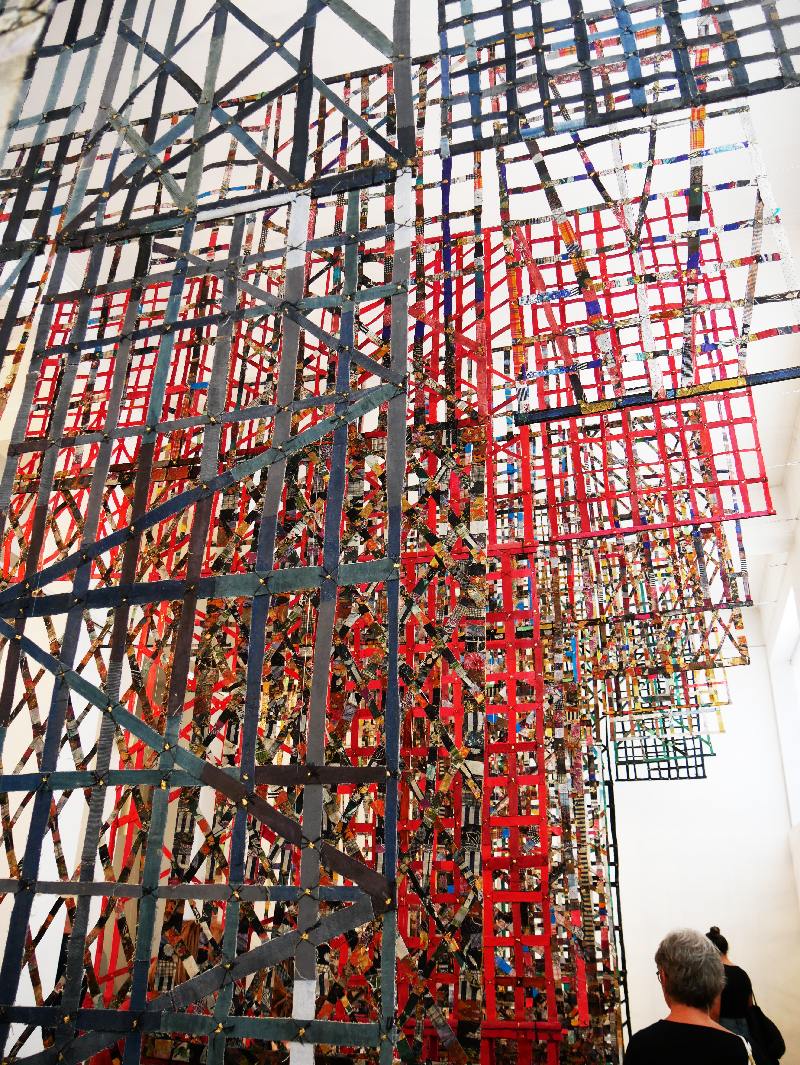
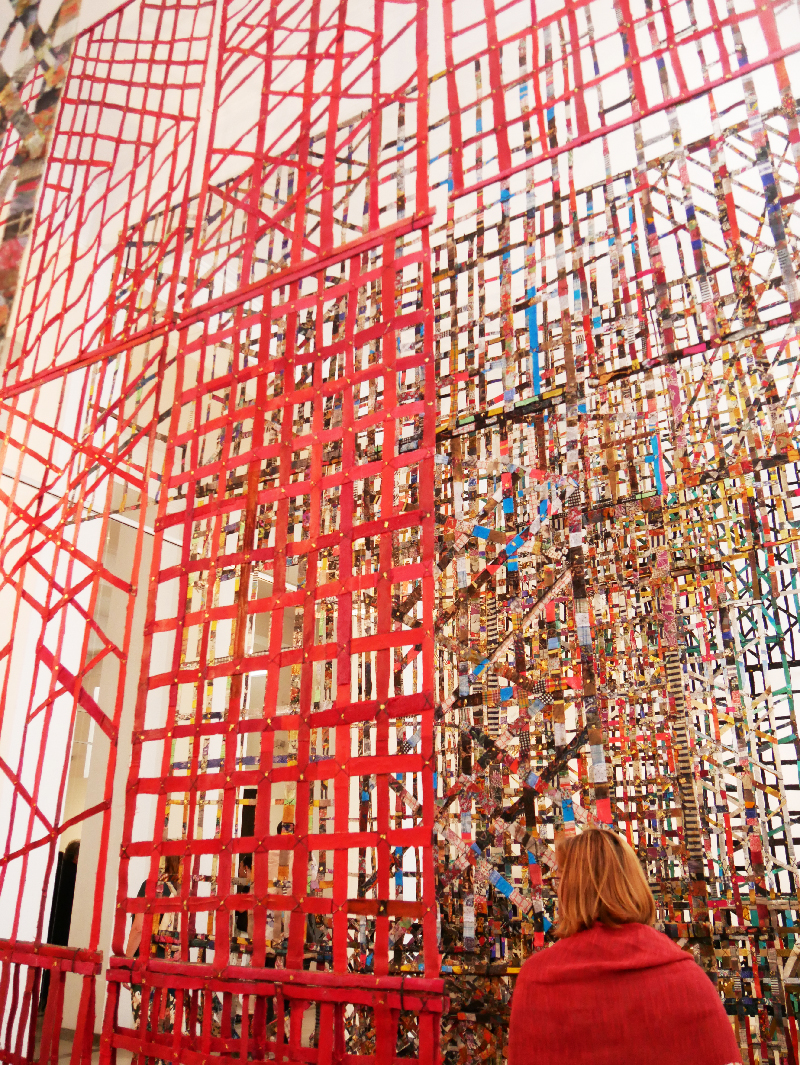
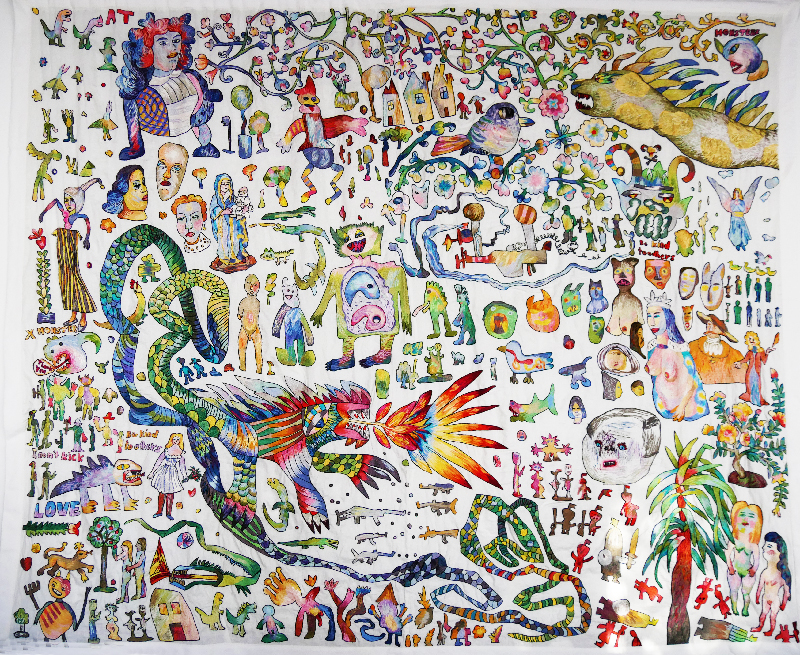
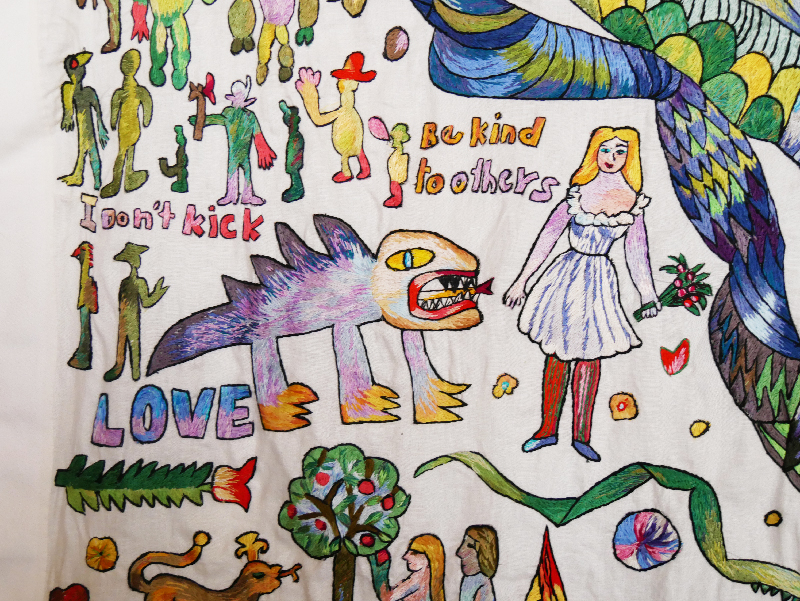
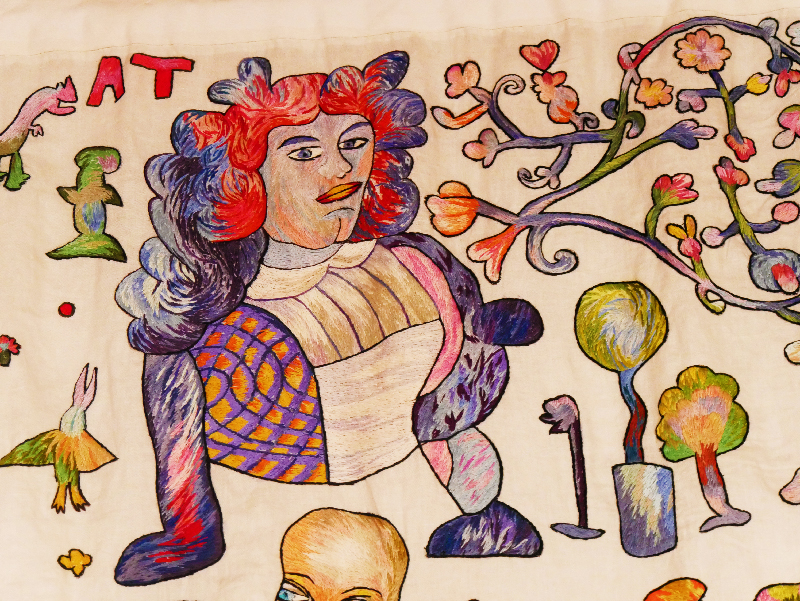
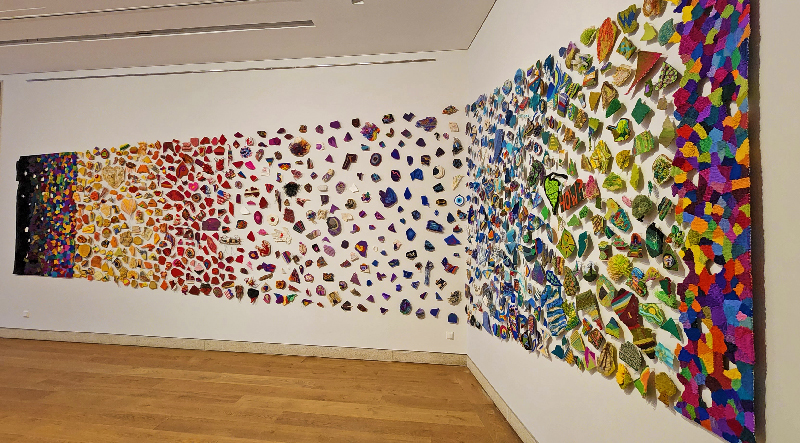
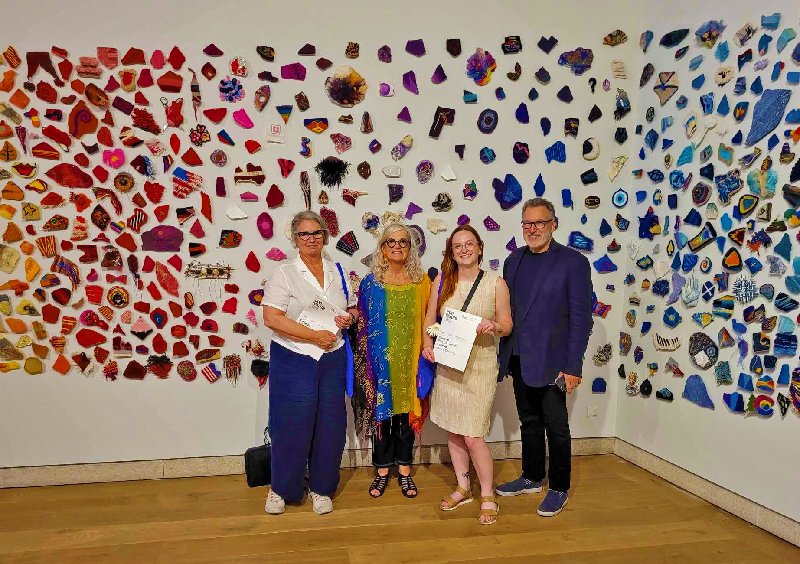
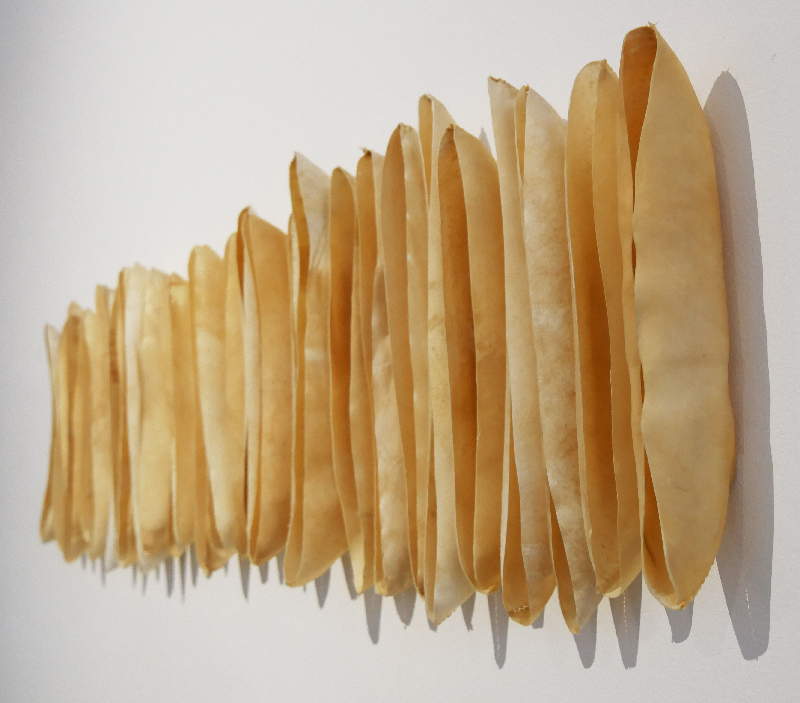
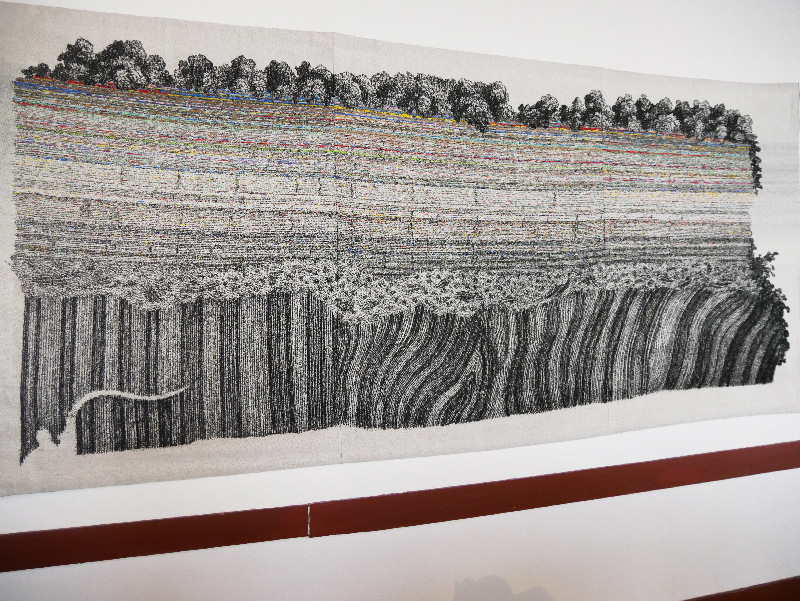
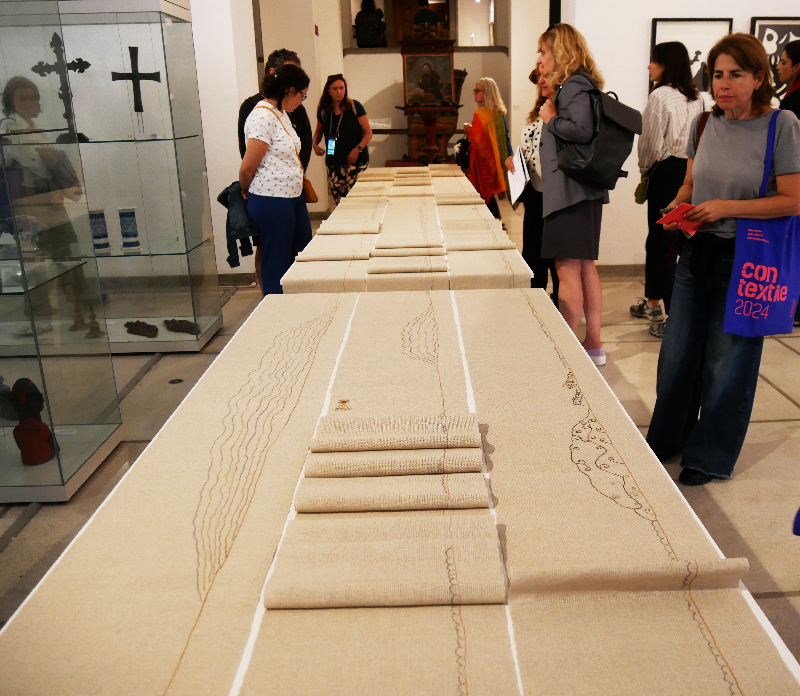
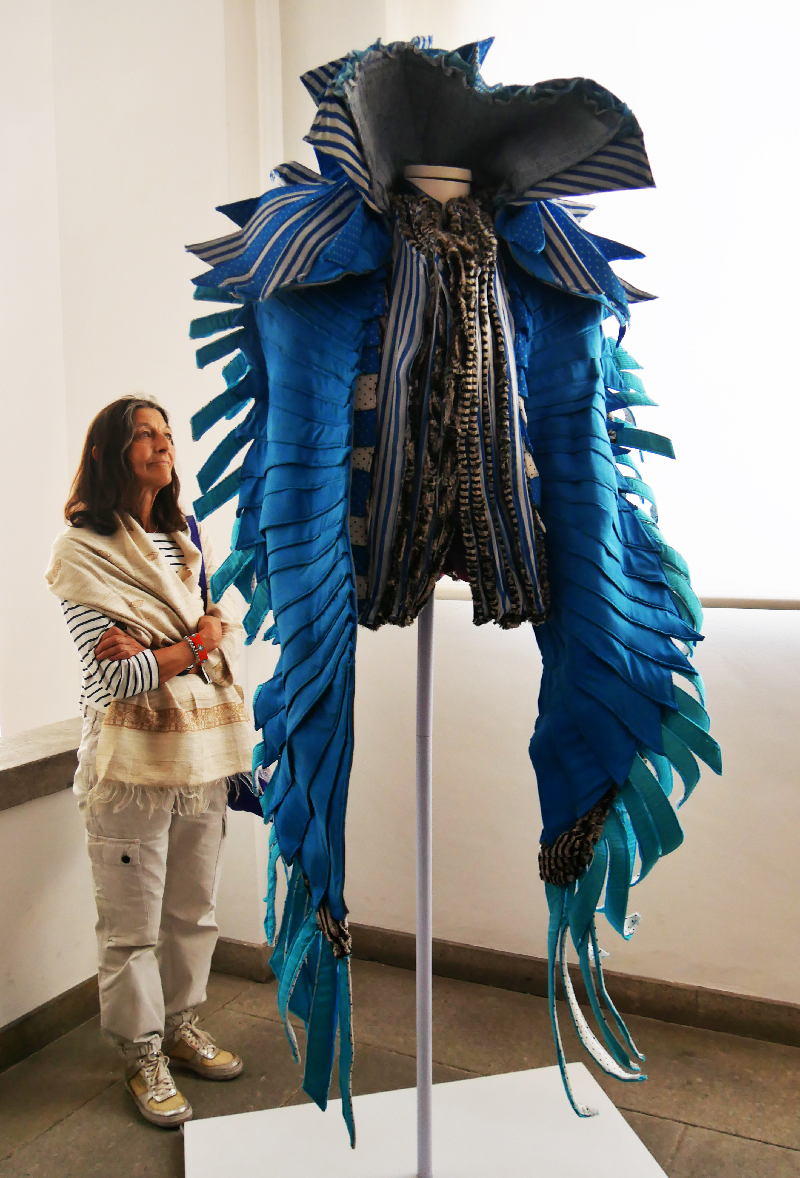
The educational institutions from Portugal had an extra exhibition to show the achievements of their students. Schools represented here were the Escola Artistica António Arroio from Lisbon, the Escola Artistica Soares dos Reis from Porto, the Escola Superior de Arte e Design from Matosinhos, the Faculdade de belas Artes da Universidade de lisboa, the Faculdade de Belas Artes da Universidade do Porto, the Universidade da Beira Interior from Colvilha, as also the Escola de Arquitetura, Arte e Design da Universidade do Minho from Guimaraes. I had the impression that studying textile art and design is getting more popular among young people. It would be a good idea to make a young people Textile Biennal like is organized in Lodz during the International Tapestry Triennial.
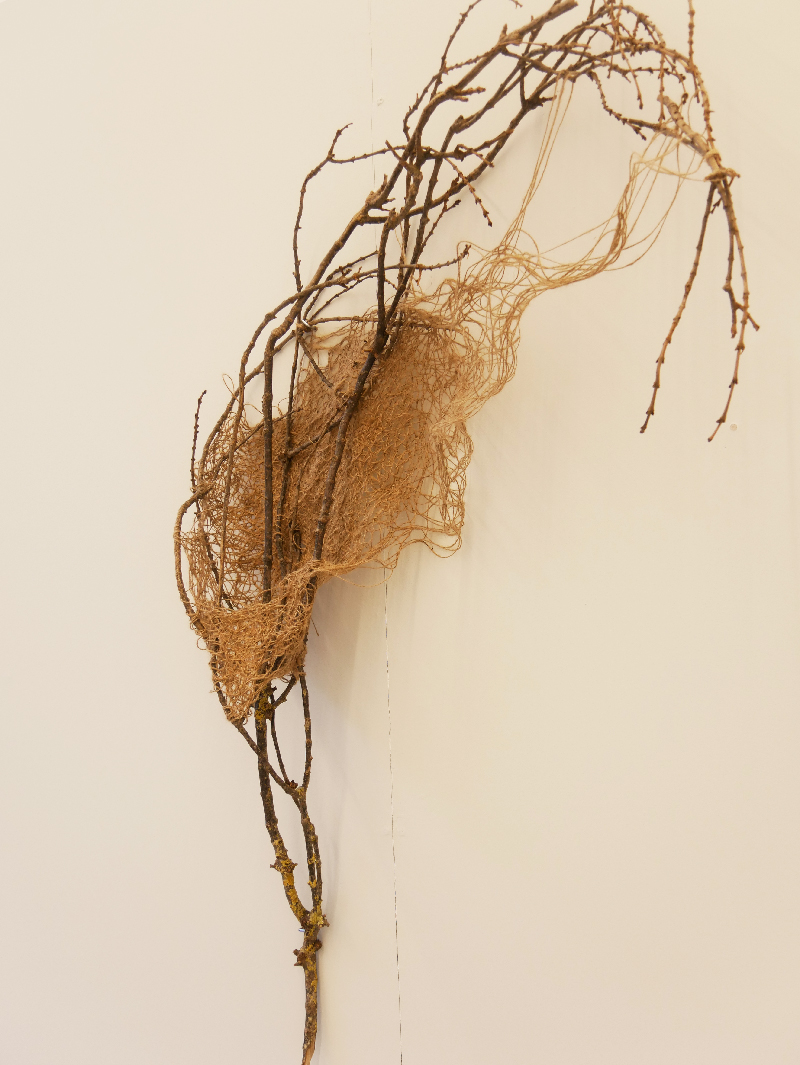
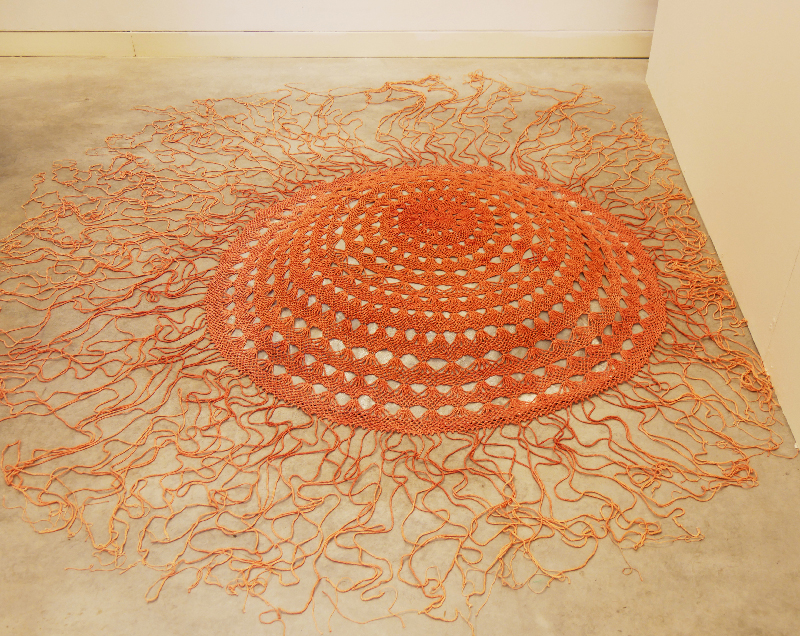
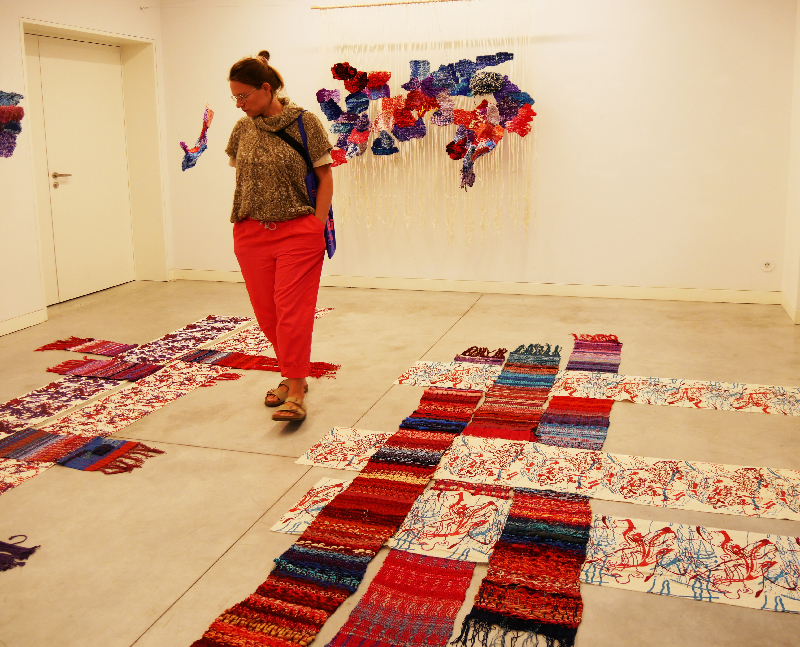
A real surprise was the exhibition „ Threads of Memory“ of Josep Grau-Garriga (Sant Cugat del Válles, Spain, 1929 – Angers, France, 2011), who is considered one of the most important protagonists of the innovative movement that, in the second half of the 20th century, definitively transformed the old art of tapestry. From his origin as a muralist painter, his work in the carpet and tapestry workshop in Sant Cygat, Barcelona, and his time at Jean Lurçat´s workshop, he entered the field of expanded sculpture, introducing reliefs and volumes first and conquering space later while using humble and everyday fibers and materials far removed from the rich traditional materials of tapestry, but endowed with enormous strength and expressiveness.
The textile innovation that Grau-Garriga championed emphasized the tangible re-appropriation of creation, as well as the integration of textile materials, loaded with memory. His creations revalue touch as an essential element in relationships, with ourselves and with the outside world.
The exhibition „The Threads of Memory“ brings together a collection of textile works by Josep Grau-Garriga, created between 1972 and 2000. The selection around the theme of memory highlights idiosyncratic aspects of the artist’s work, both in form and content.
This show was curated by Lala de Dios and Esther Grau Quintana, who managed to get a large number of the huge tapestries to Guimaraes. I knew some the work from photos, but to see them in real in huge installations was quite overwhelming. I was not the only one who seemed to have rediscovered Grau-Garriga as one of the great renewers of tapestry. I heard many young visitors say -with good right- how much they were impressed by his work and why didn’t they know about him!
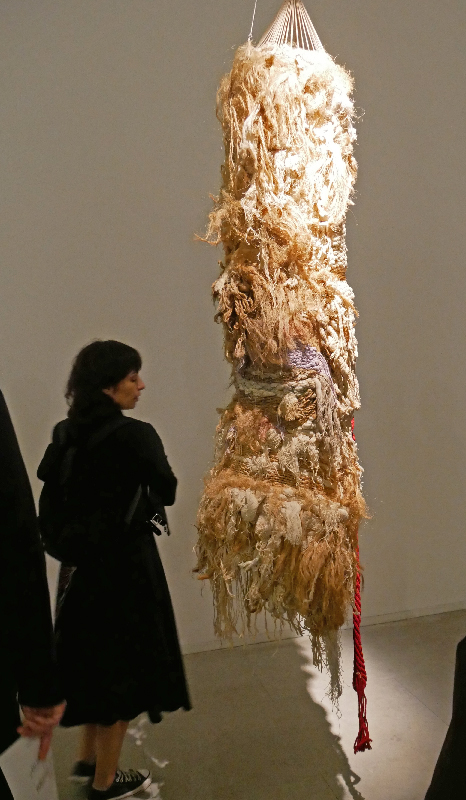
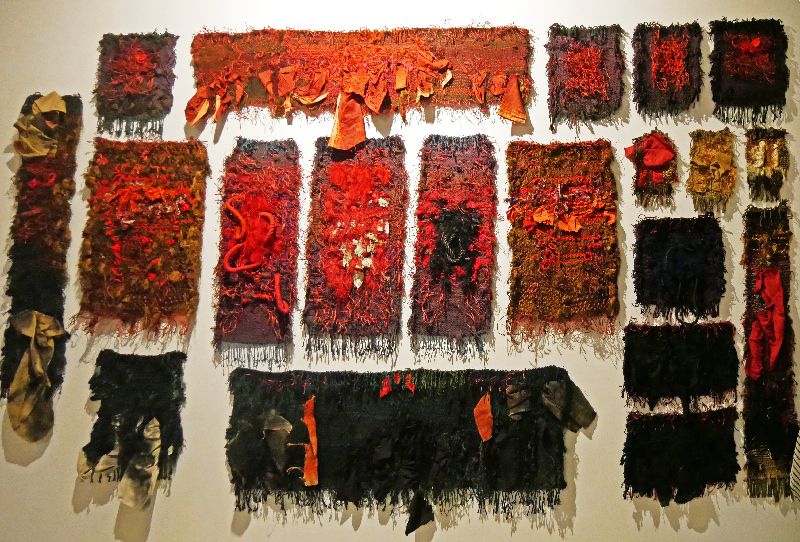
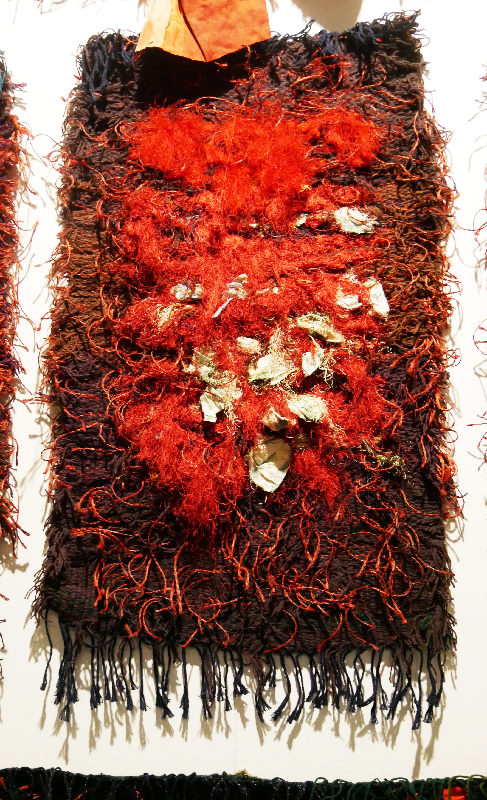
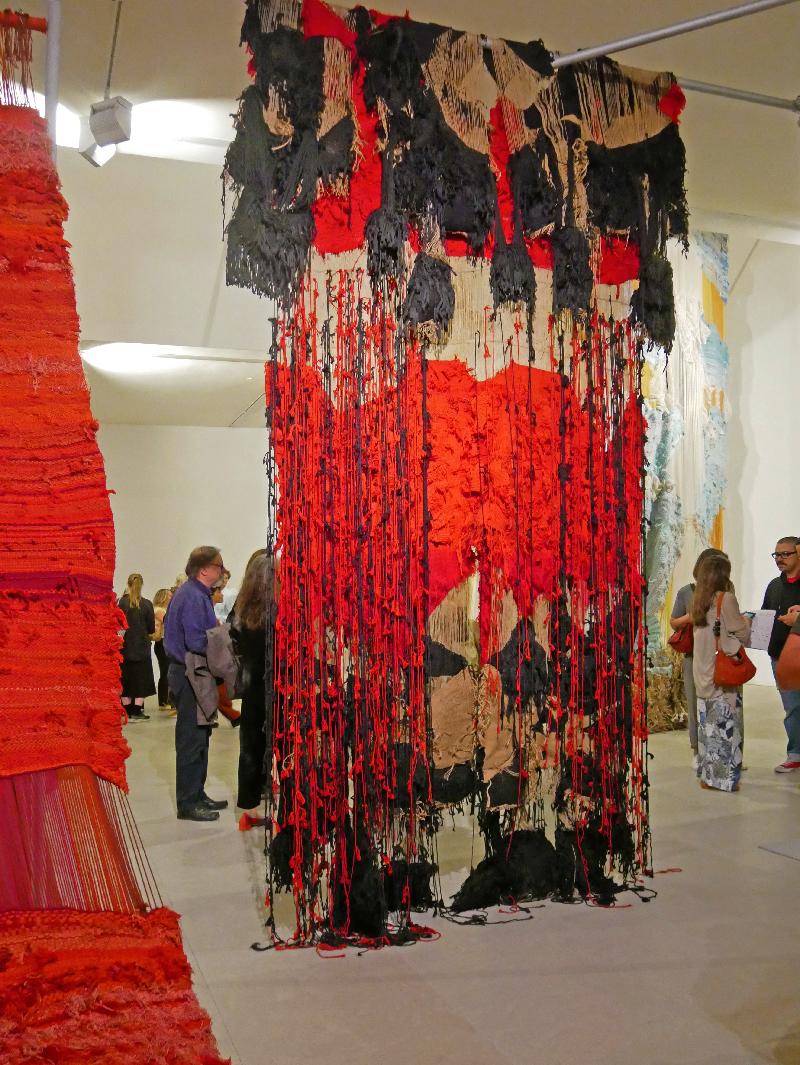
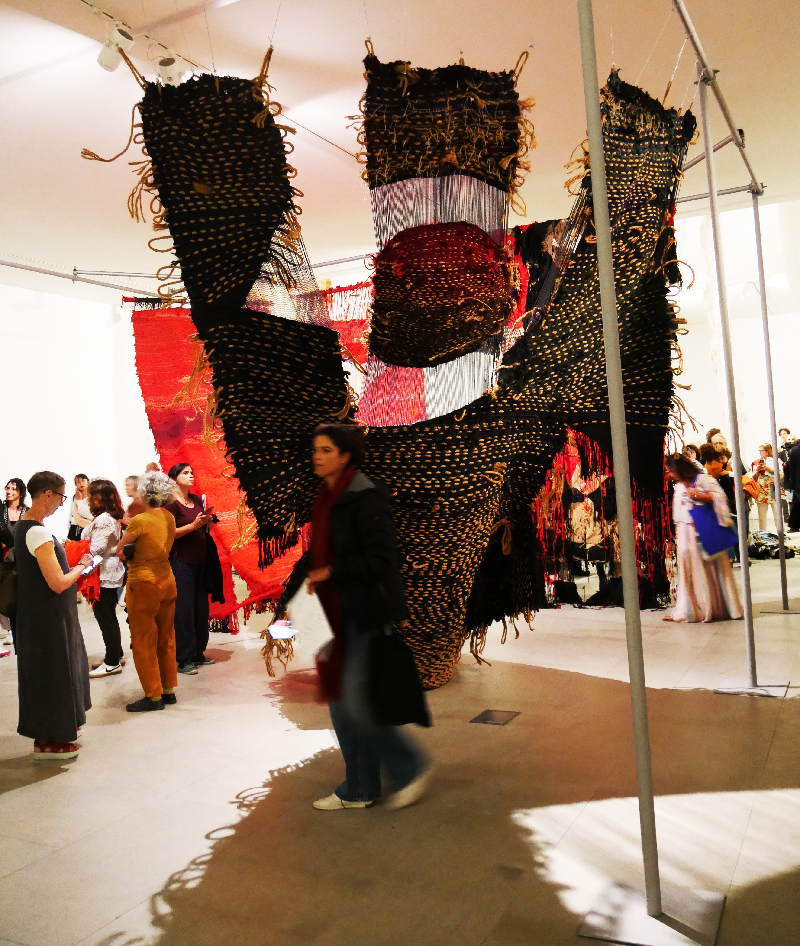
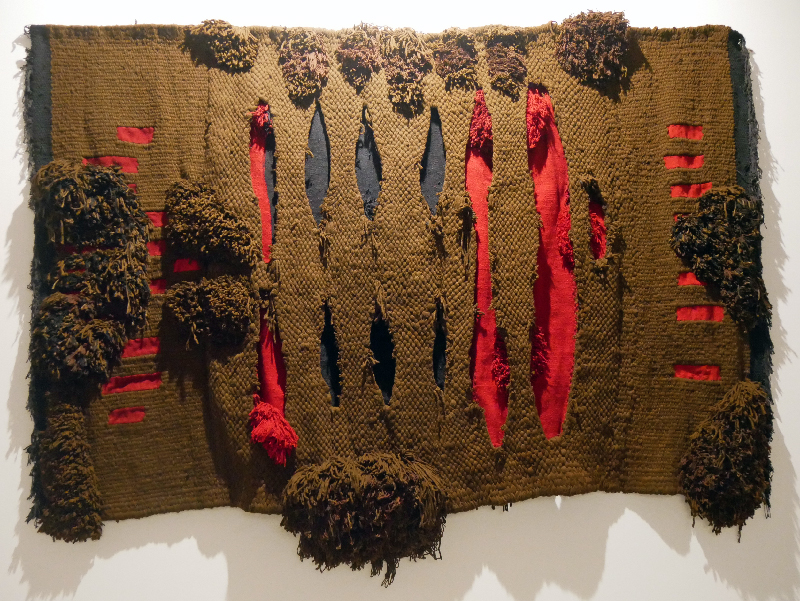
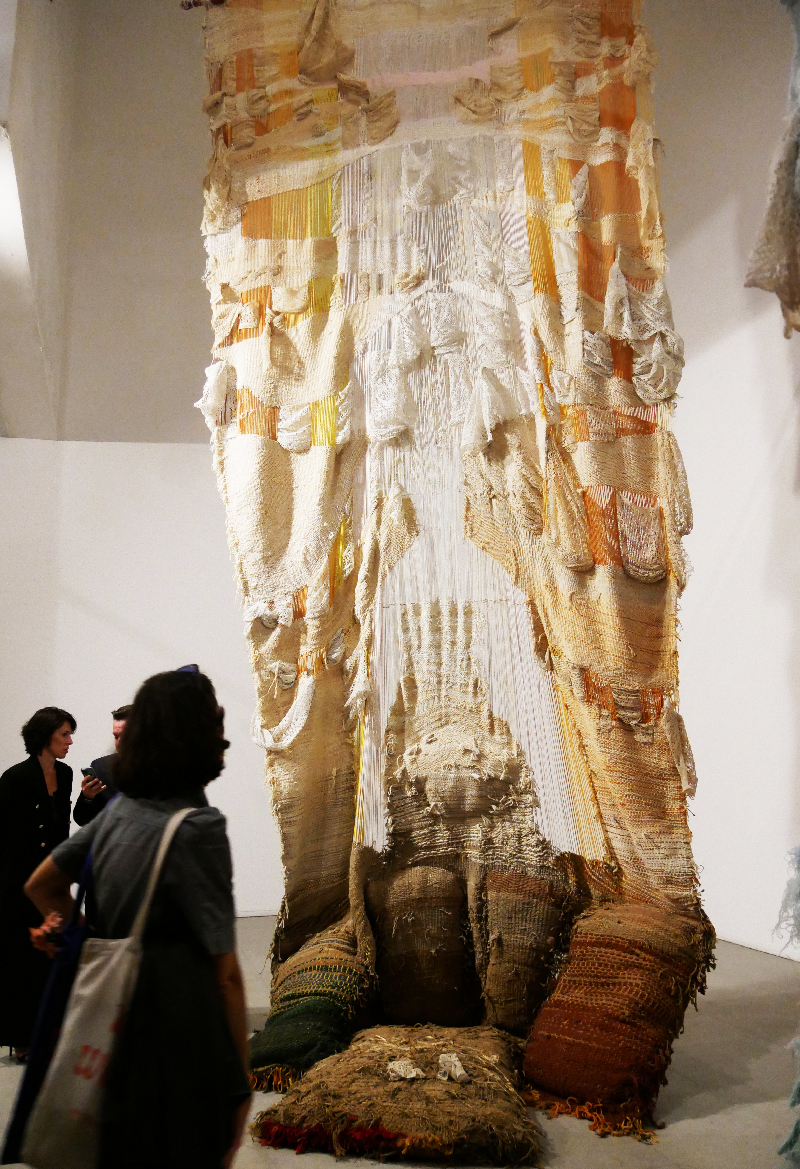
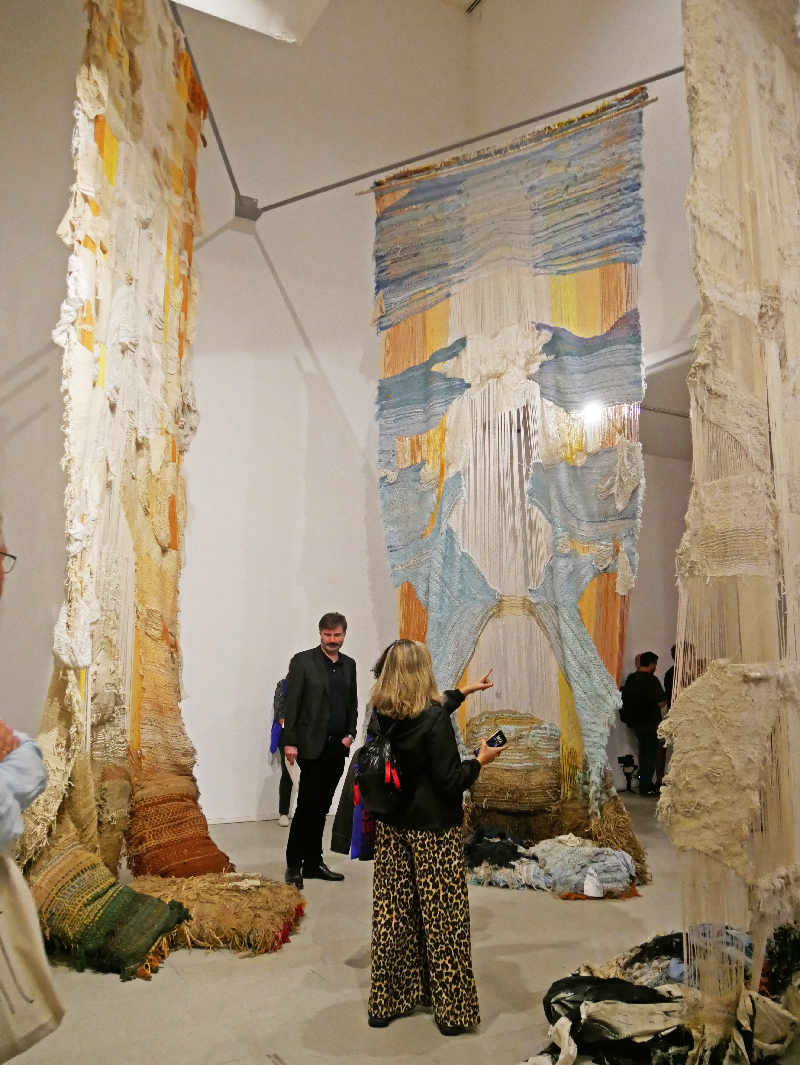
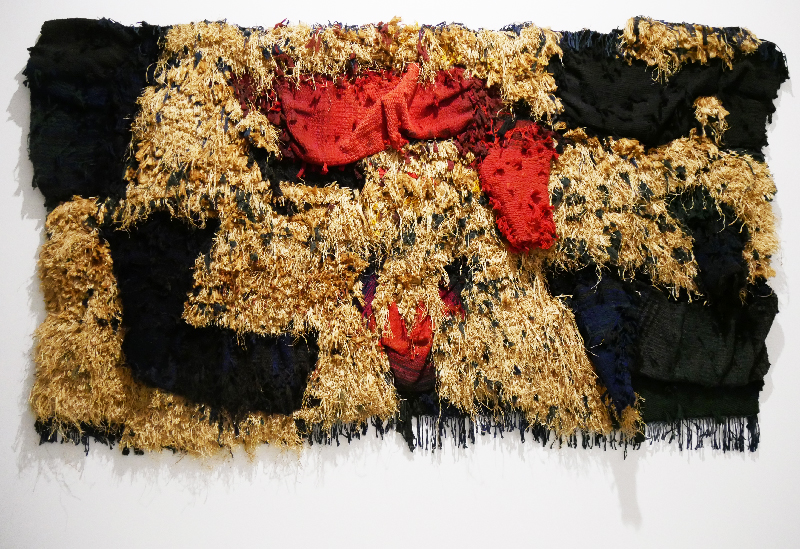
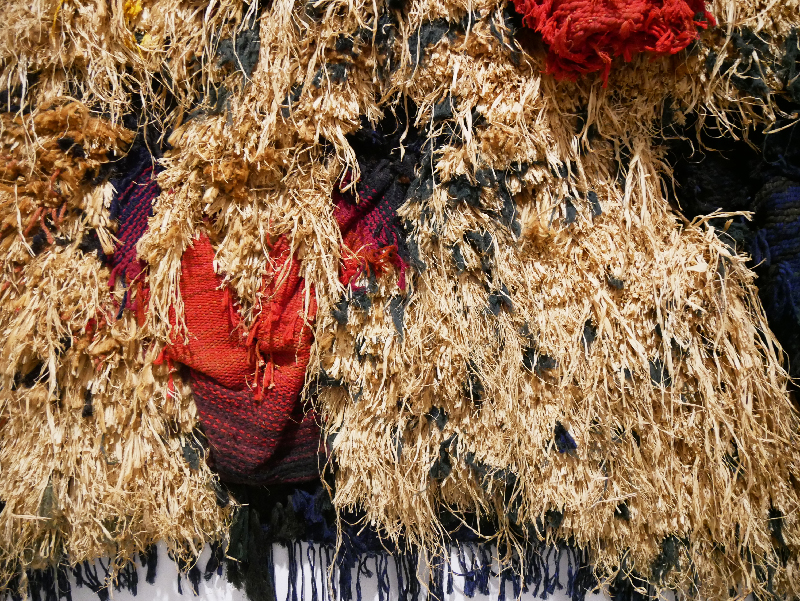
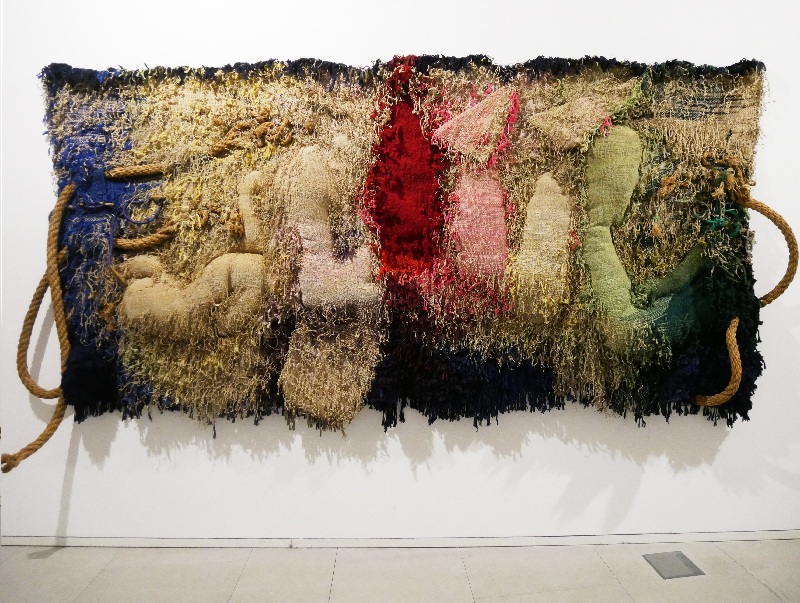
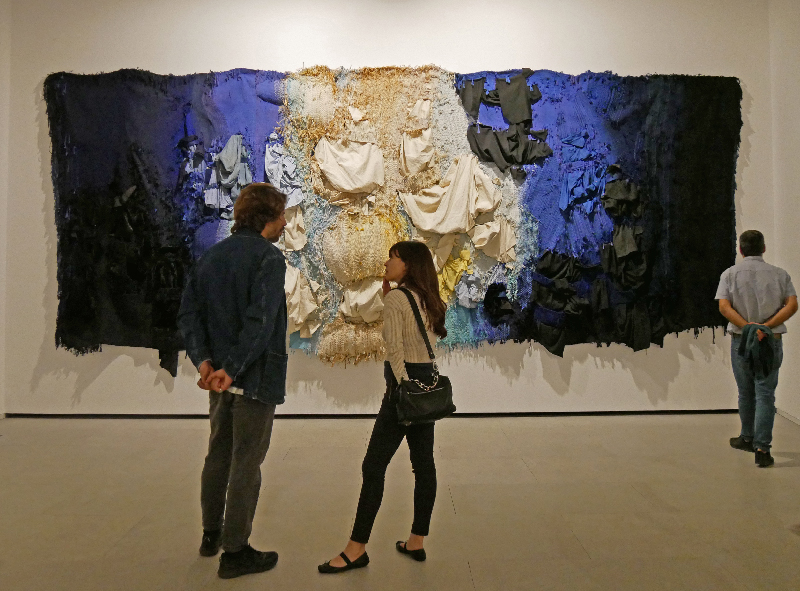

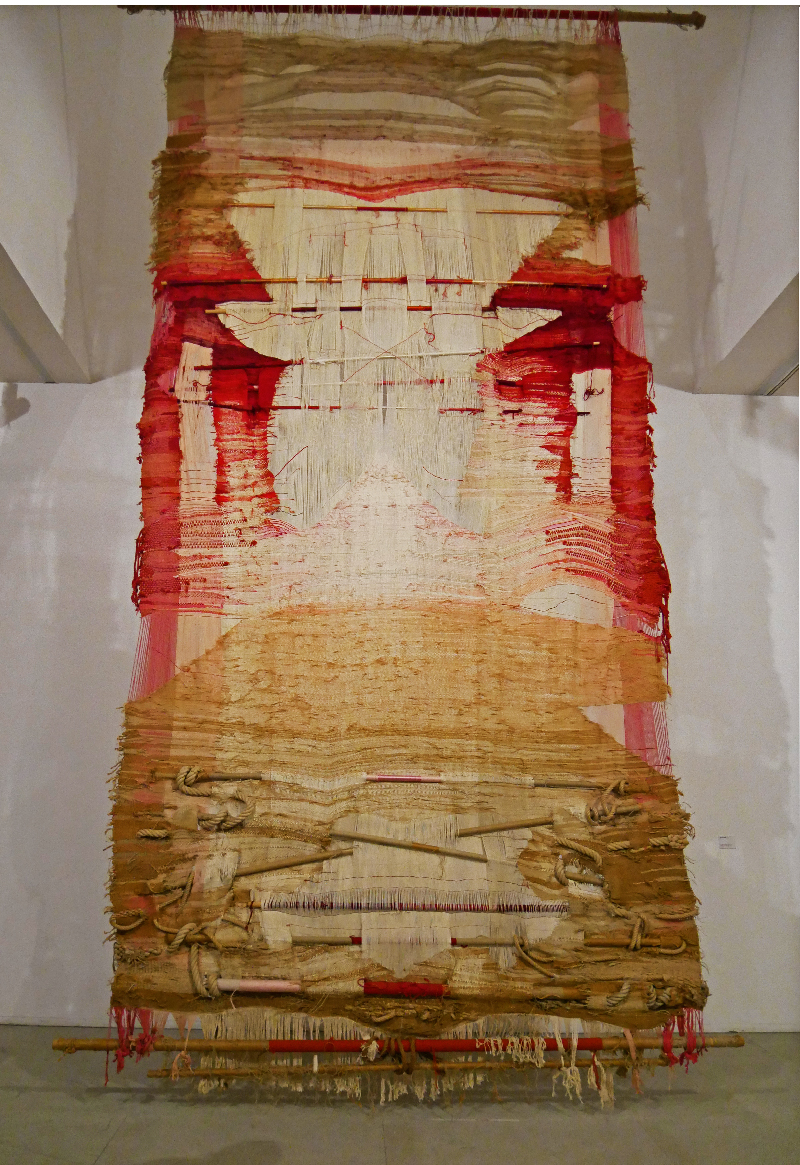
The Conference day gave many textile artists the opportunity to tell about their projects, Biennales and planned exhibitions e.g. Assadour Markarov, the Bulgarian textile artist working in China told about the 5th Hangzhou Triennial of Fiber Art in 2025; Zara Orel introduced the textile art Biennale BIEN in Slovenia. Esther Grau Quintana spoke about Josep Grau-Garriga. „Memory as a common thread in Grau-Garrigas work. Lala e Dios, co-curator of the exhibition gave the lecture A Pioneer’s Work: from Traditional Tapestry to Contemporary Art. Than there was a talk by Laura Siles from Spain about Exploring Creativity and Eco.consciousness. Domenika Krogulska-Czekalska from Poland spoke about Transcending threads: Exploring Post-Textile Discourse in Activism.
A further personal highlight came a day later when I was able to take part for some hours in a paper thread-making workshop given by Mylene Boisvert from Canada. Ever since I am enjoying spinning paper yarns, learning more about mulberry paper as I had once seen being made in Uzbekistan!
I was so taken by the subject that I did not see any of the other workshops on machine knitting, Guimaraes embroidery and textile techniques &photographic images. Next time I will plan more time to stay in this charming city of Guimaraes, that became so important for textile artists!
